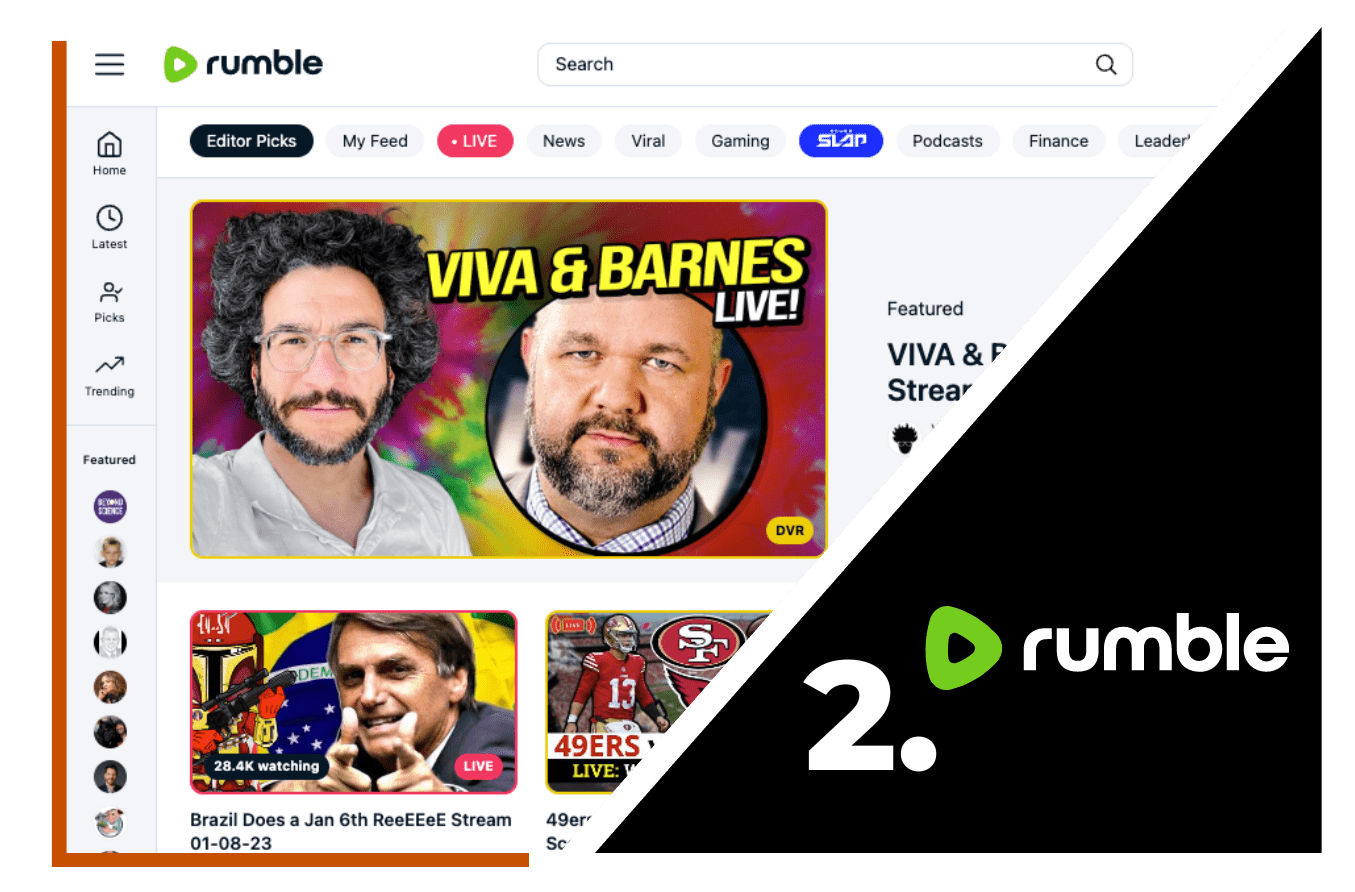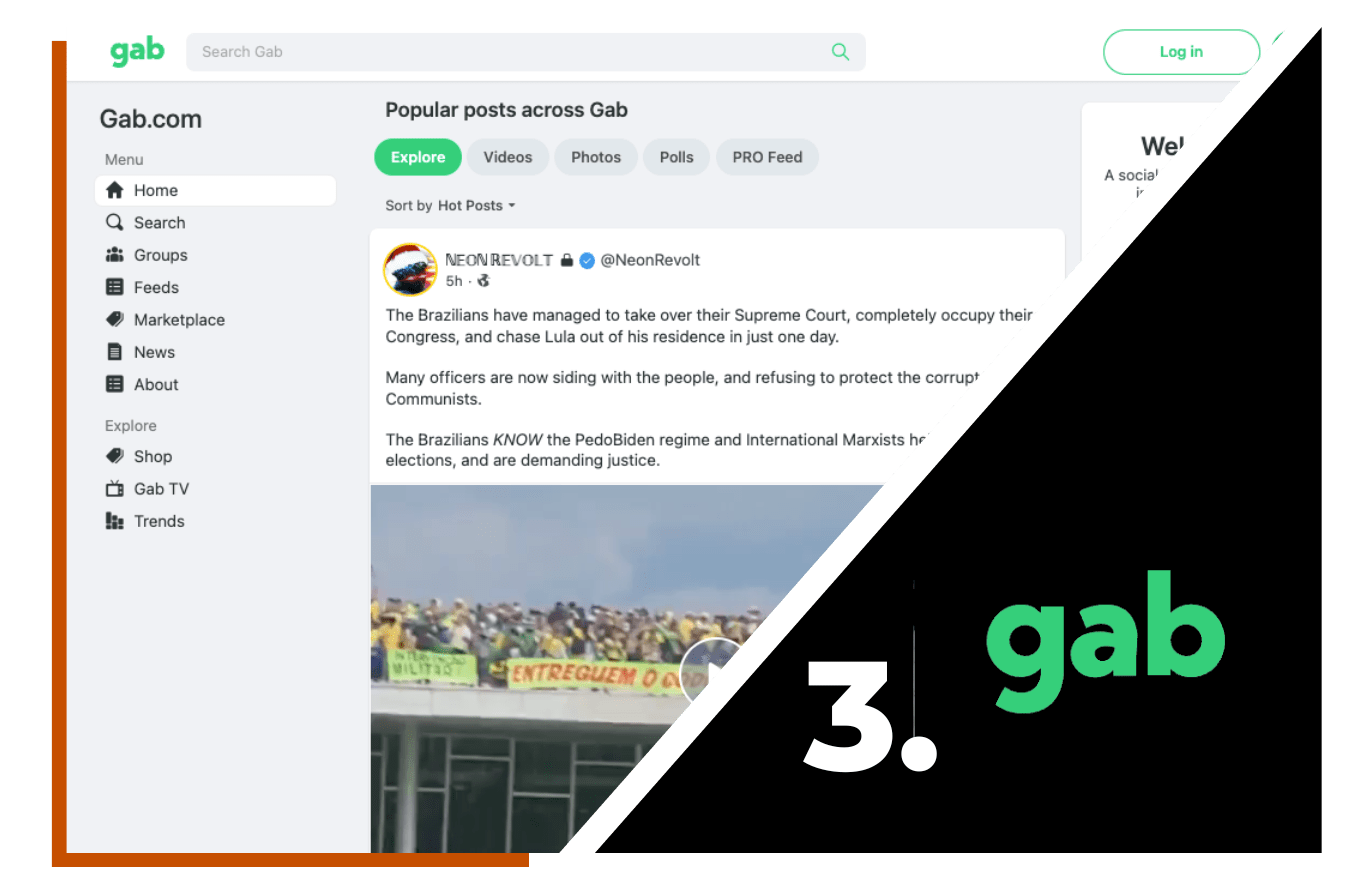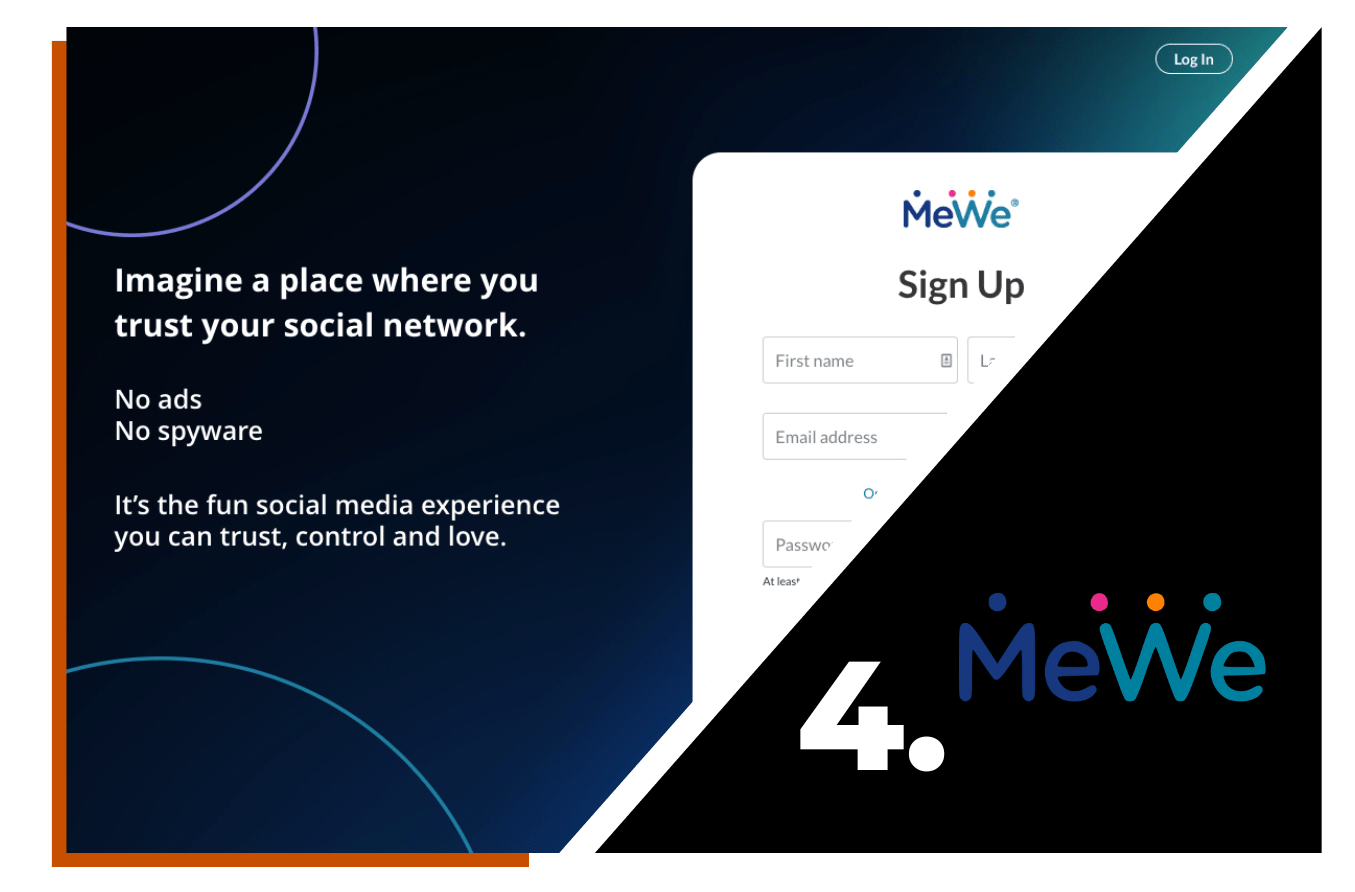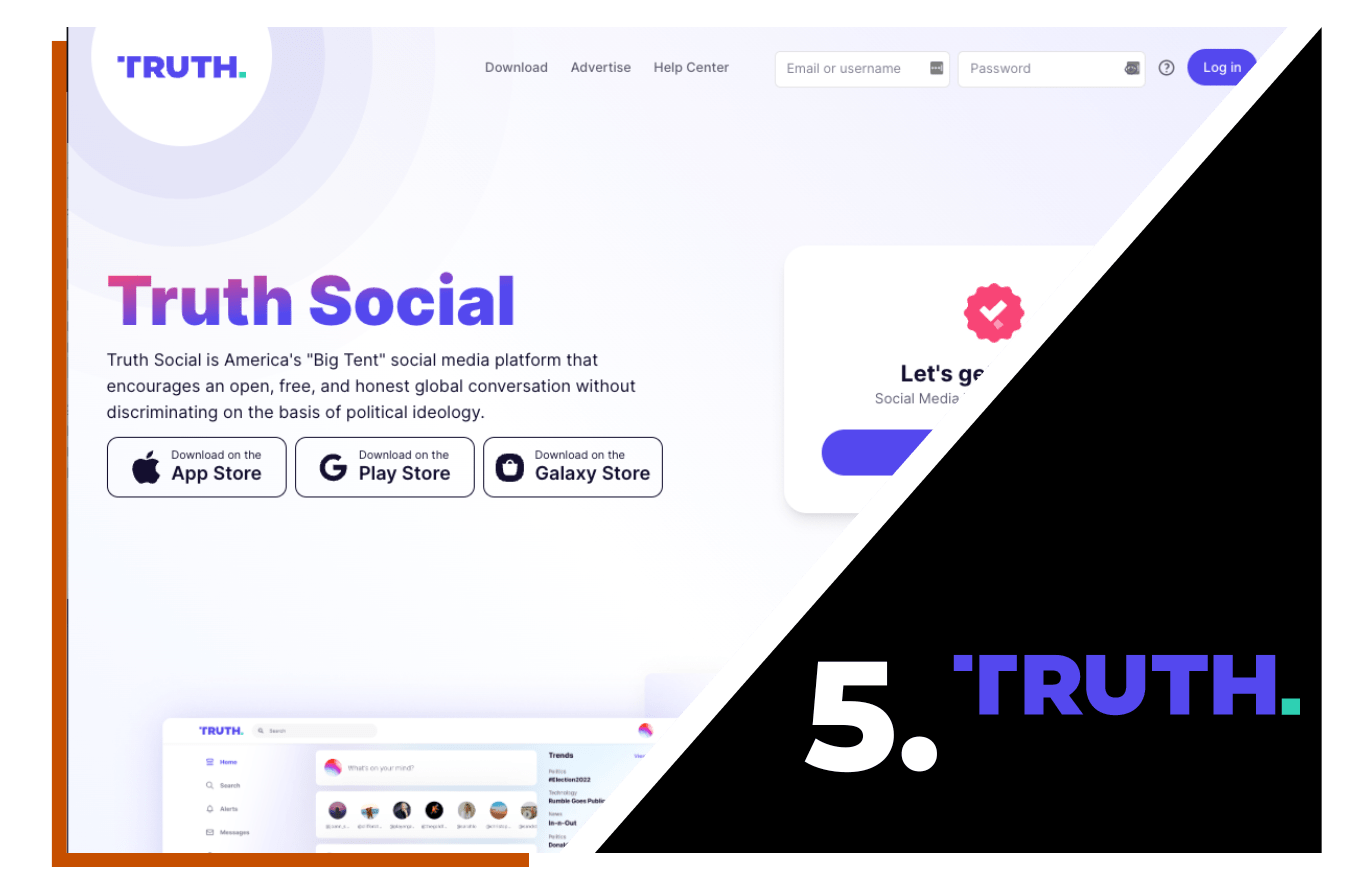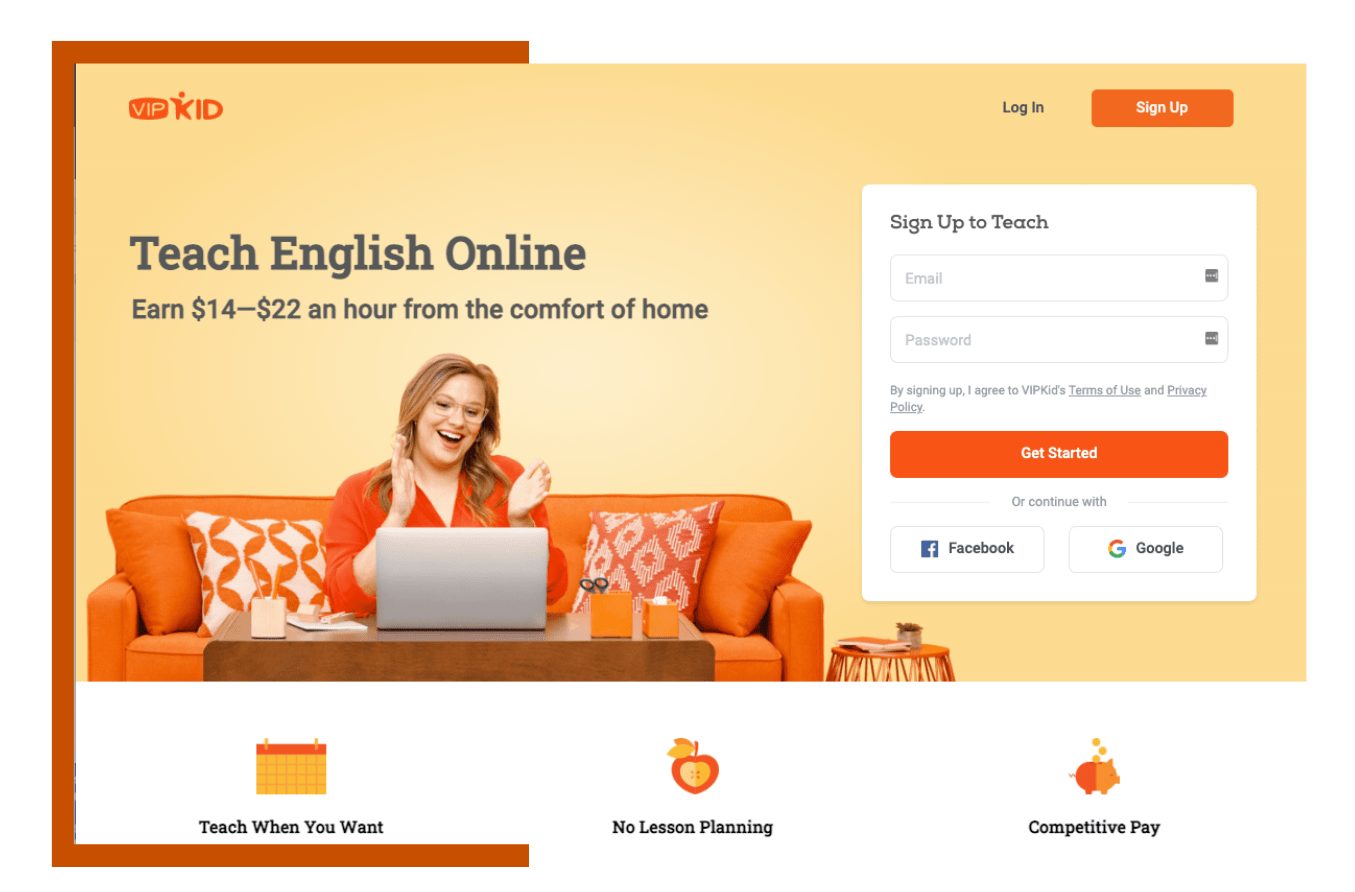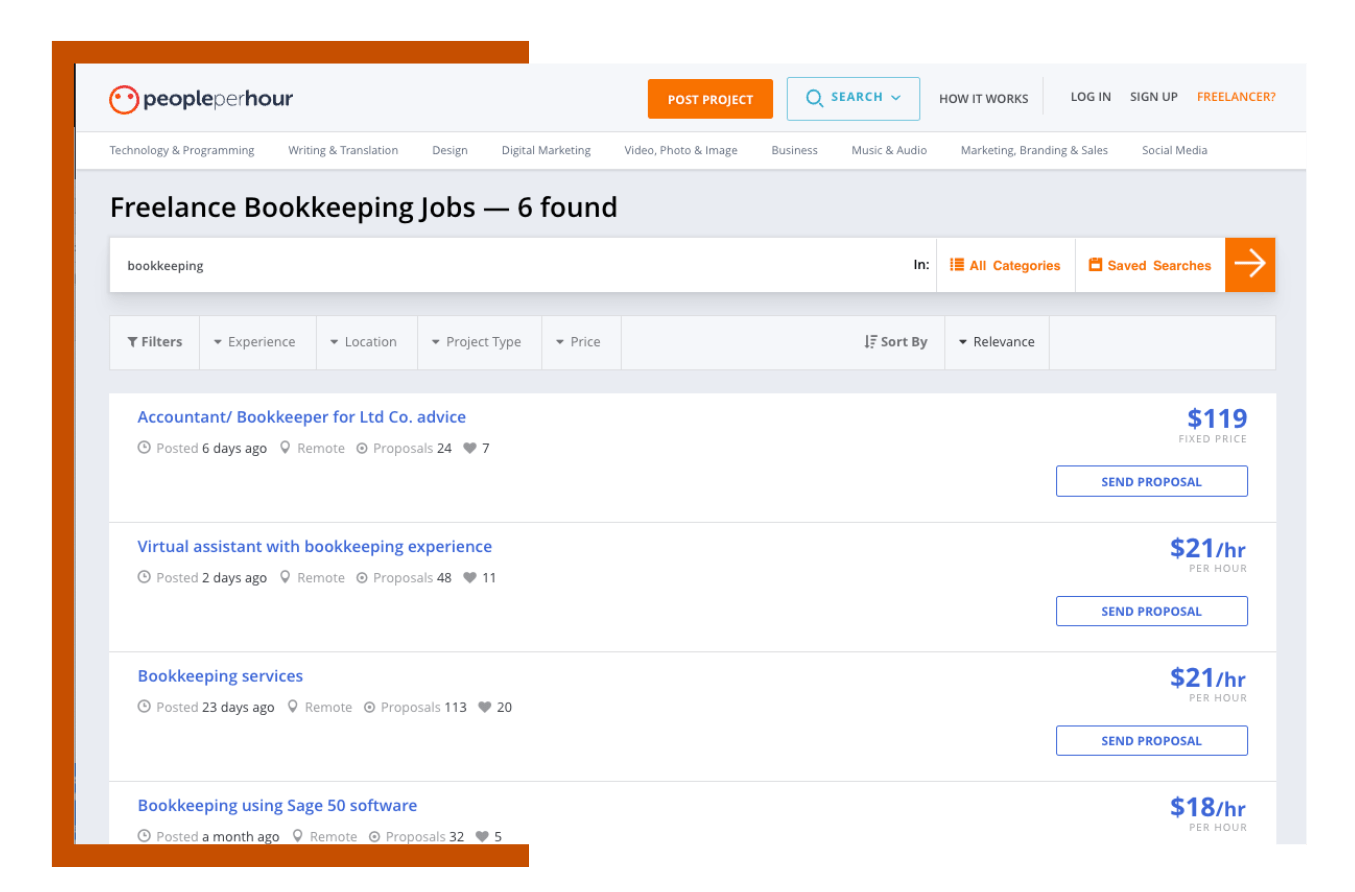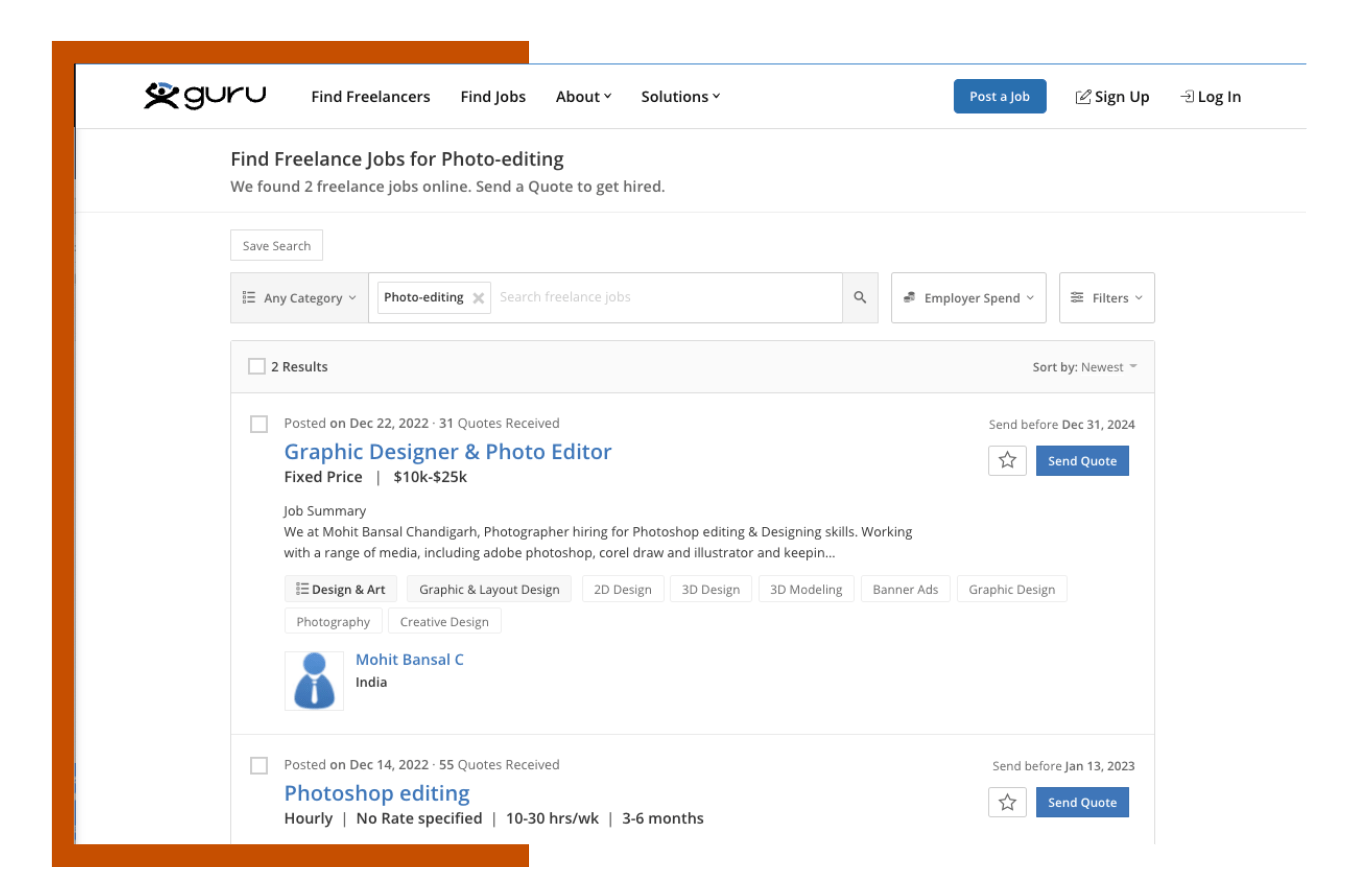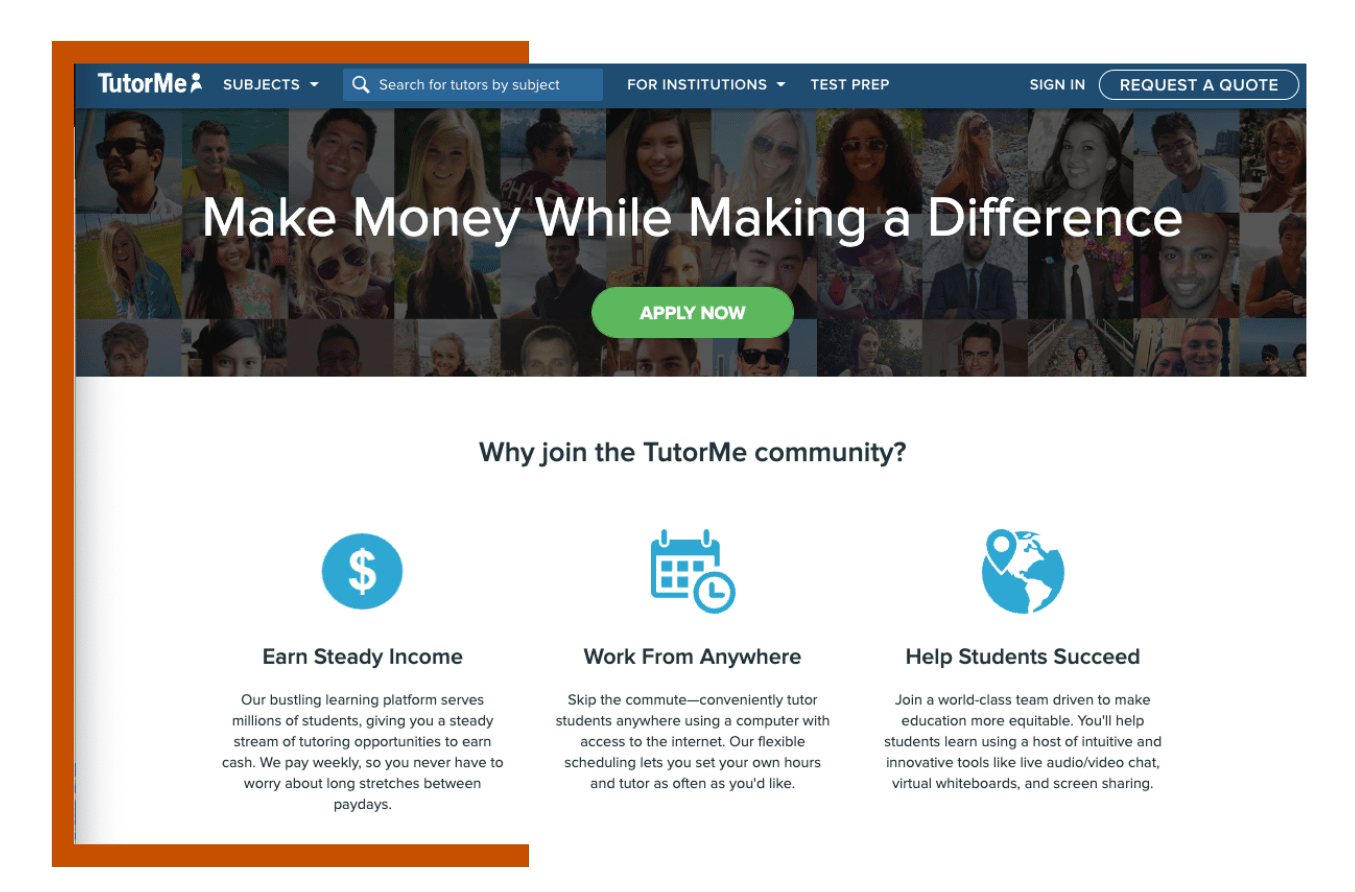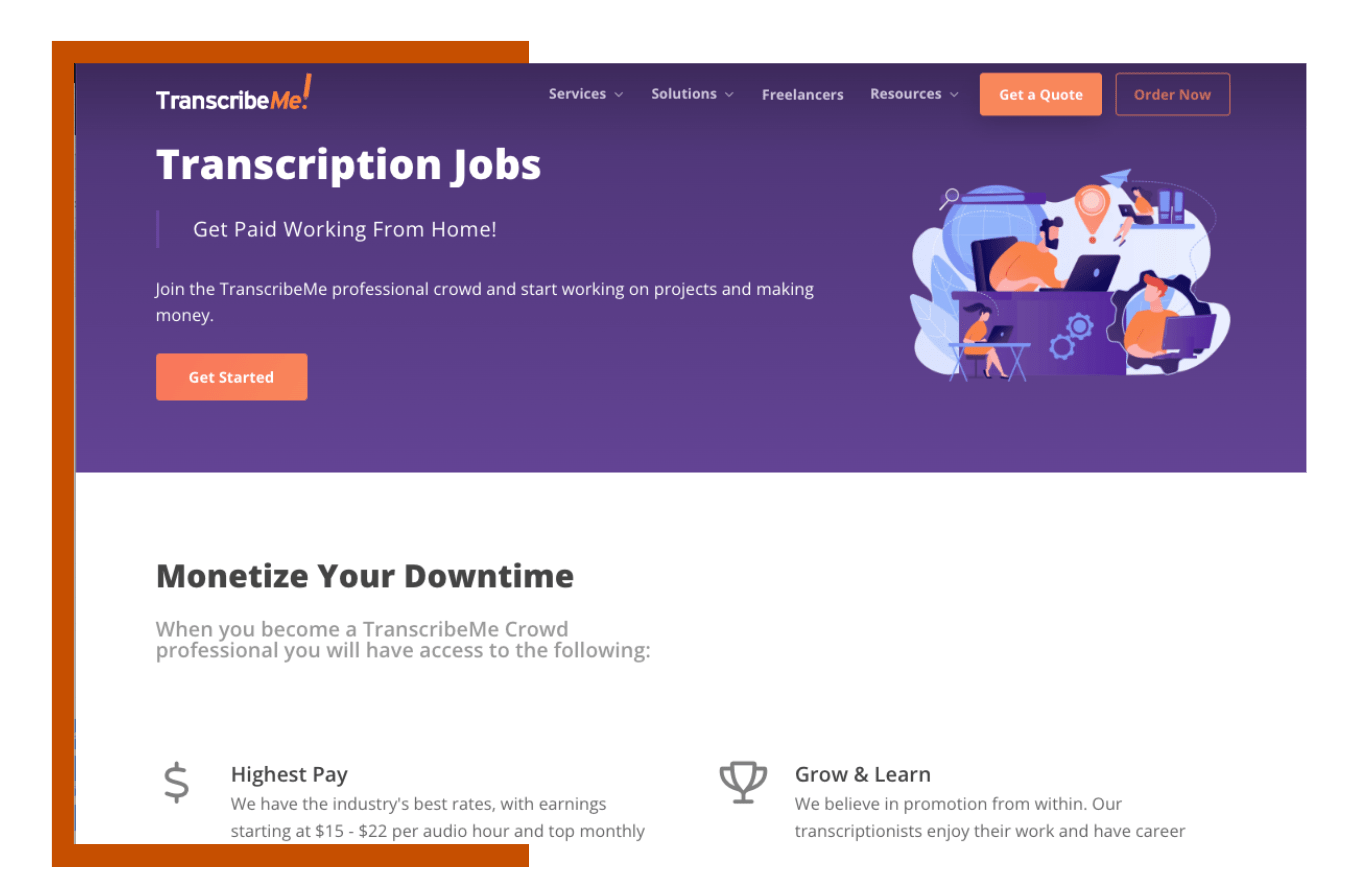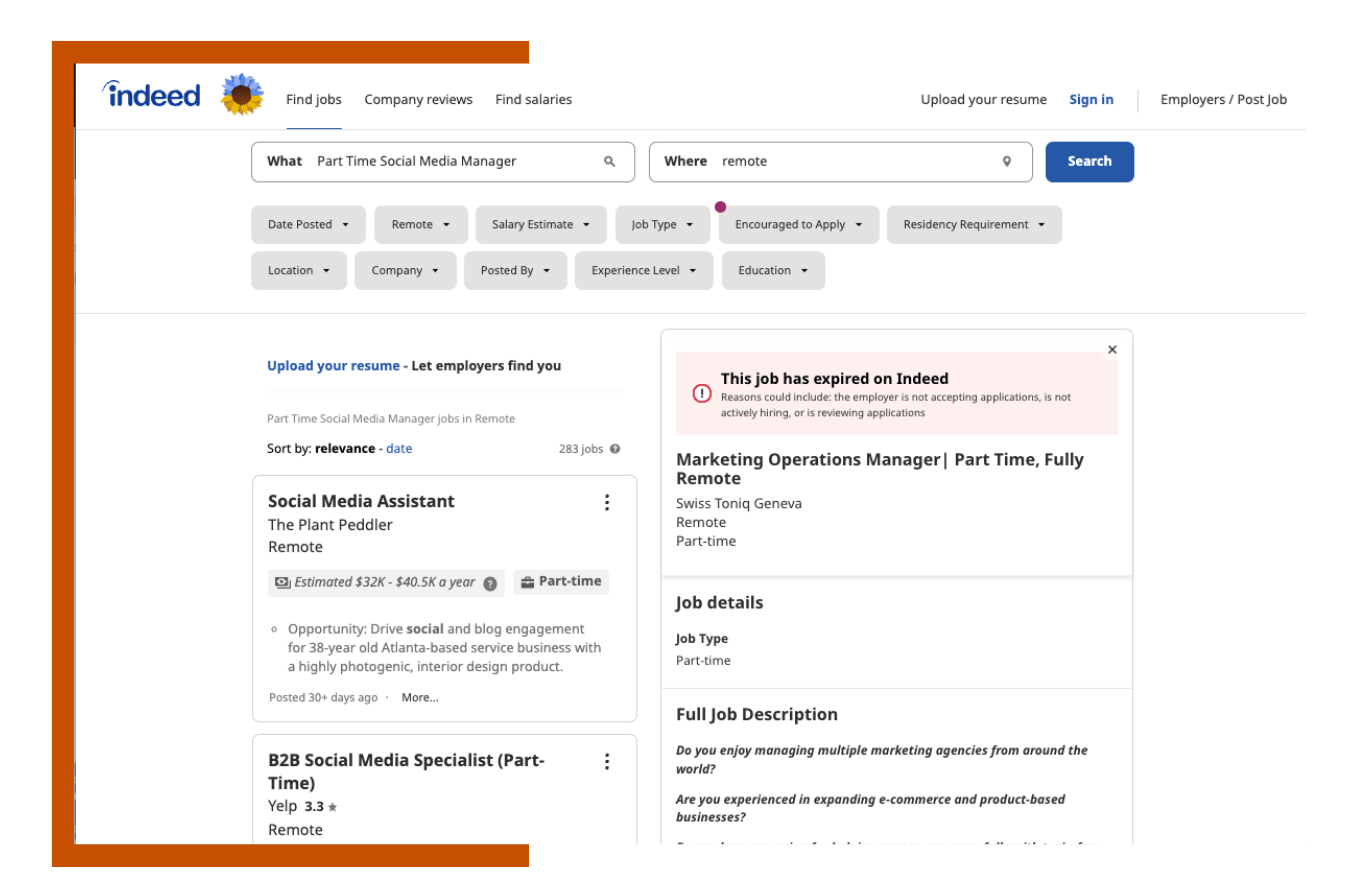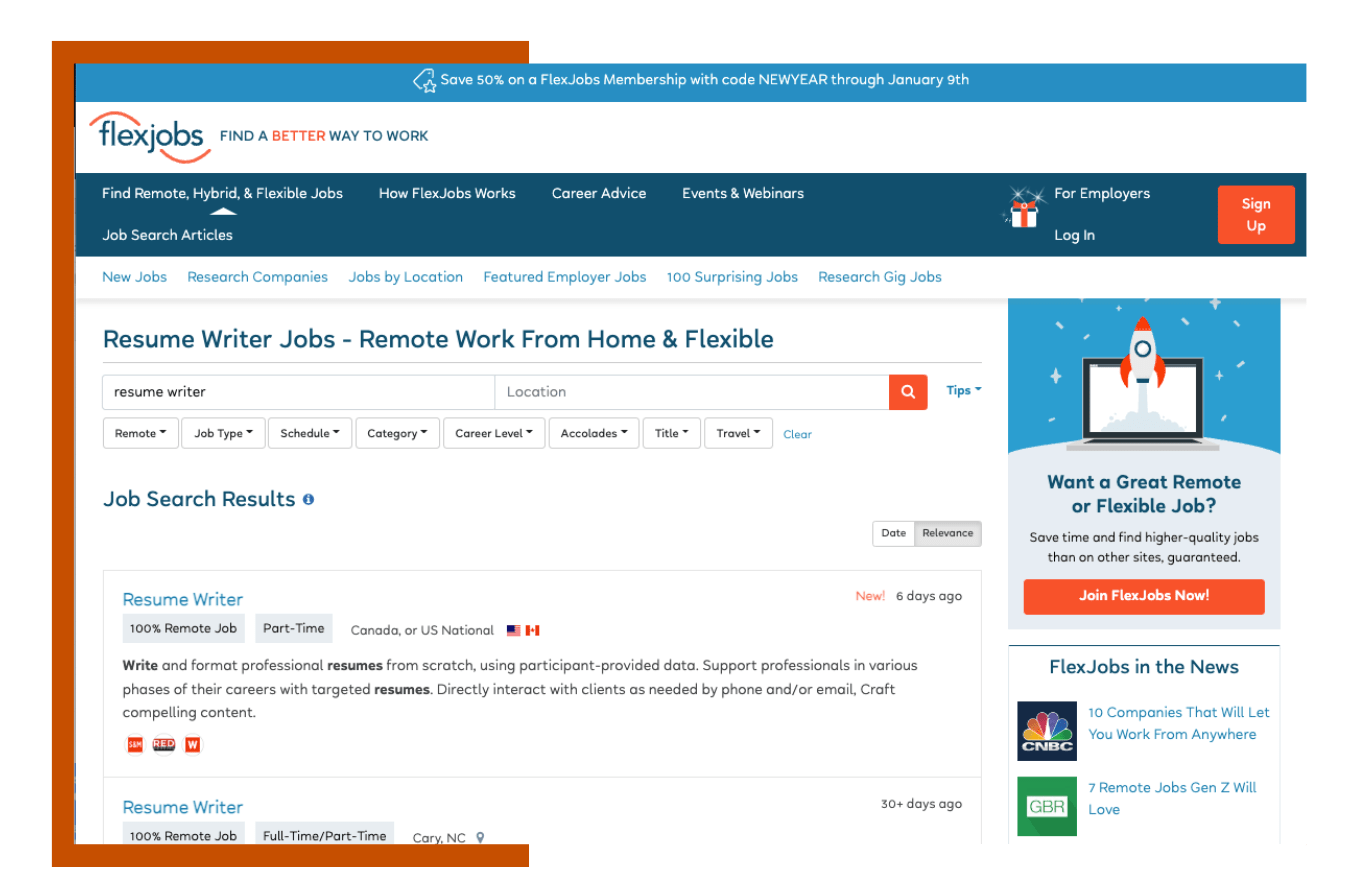What is Digital Engagement?
The Conservative Alternative to Facebook: Top 5 Platforms
- Community
- Content Strategy
- Guiding People
- and 2 more...

Americans live in a time of polarized politics – and that's easy to see on social media. Although the ability to express one's beliefs has begun to feel more like a right than a privilege, some feel their views are being censored, and have even begun seeking a conservative alternative to Facebook.
The Current Throne of Social Media
In many ways, a reaction to Facebook's dominance makes sense. Maybe it was even inevitable. According to parent company Meta, about 2 billion people use the platform every day, making it the leading social network overall and the biggest in the U.S., with over 63% of the population 13 or older using it. That's about 210 million Americans, and with its huge potential reach, Facebook has to regulate what gets posted – which has become a politically sensitive proposition.
What is the Role of a Social Media Company?
Most policies are intended to counteract disinformation and silence hate speech, which most Americans agree is important. But then the question becomes, "what is disinformation and hate speech?" As a result, many American conservatives believe Facebook has gone too far.
Posts by influential right-wing commentators have been flagged, and users have been suspended – or even de-platformed altogether – with some accusing Facebook of putting its thumb on the scale of democracy. Add in nagging privacy and security issues, and many have left Facebook, searching for something… different.
Lucky for them, a whole parallel social-media universe has sprung up.
Top 5 options when looking for a Conservative Alternative to Facebook.
1. Parler
This whole "conservative alternative to Facebook" thing didn't come from nowhere … it started with Parler. Purpose-built in 2018 and described as an "unbiased alternative to mainstream social networks," Parler first became widely popular in 2020, just as Facebook policies changed. It was then banned by Apple, Google, and Amazon stores, killing some of its momentum. But now it's back with stricter content controls and has about 15 million users, which tends to spike during election cycles.
- The "OG" of conservative platforms
- Focused on free sharing of non-mainstream news and opinion
- Users say its more restrictive than it lets on
2. Rumble
Rumble launched in Canada in 2013 and has now become a conservative favorite for video sharing à la YouTube. Users can share video content without restriction – and even monetize it, which Facebook doesn't allow. The platform experienced an influx of users after the 2020 election and now claims 80 million users, most of whom were referred from Parler after it was temporarily suspended.
- Unrestricted content sharing
- Large, politically active user base
- Can monetize your content
3. Gab
Next up is Gab, which launched in 2017 as just another social network, but has grown to become a home for the "outcasts" of the mainstream. A microblogging site similar to Twitter, many users arrive on Gab after being banned by other networks, drawn to the site's promotion of "free speech," "individual liberty," "free flow of information online," and Christian values. Detractors call it a haven for extremism, racism, conspiracy nuts, and antisemites, claiming it plays a role in growing radicalization.
- Can publish posts, chat, create private groups, read conservative news, and even shop
- Fierce devotion to "freedom of expression"
- A reputation that makes it attractive to extremists, hate speech
4. MeWe
MeWe is an exciting option in the conservative alternative to Facebook world. It's not explicitly described as "conservative" in any way, but does have a value proposition that aligns well with many conservative values. Billing itself as the "anti" Facebook, MeWe allows for posting, groups, and other social must-haves with no ads, no data targeting, no political bias,, and no news feed manipulation. It currently boasts about 20 million users.
- Posting, news, groups, personal chats, user tagging, and a two-way camera for video chats
- Hands off approach to user data
- Doesn't gather user info (or sell it to China)
5. Truth
Finally, we come to Truth Social. Launched in 2022 by former U.S. President Donald Trump, it is a direct response to the removal of certain conservative users from other platforms – including the former President himself. Purpose-built as an "uncensored" alternative to Twitter and Facebook, Truth aims to allow for free expression, and offers most of the familiar social media features you are used to, but has at times been accused of censorship itself. It's also small for now, with only about 2 million users, but it's the only place to be if you're looking to keep up with Trump.
- First and only social media platform started by a former president
- Created as a purpose-built conservative alternative to Facebook
- Can post Truths and share "ReTruth," as well as video content
If you want a conservative alternative to Facebook, these are just a few of the many options out there – and the field keeps growing all the time. Whether you're looking to bring your users into one platform where you own the data and monetization or just want a new social media environment. For users worried about their views being unfairly censored or silenced, it seems free speech is alive and well.
Get Started With Cause Machine
Starting with a community engagement strategy is the secret to building a successful platform in the long term. Cause Machine helps customers build the plan of engaging a community well and then begin mapping out the technology to help support that strategy. We’re certain that you’ll find some great resources and powerful tools in Cause Machine to better engage your community. Learn how it can work for you here.
Virtual Event Software That Creates Incredible Online Experiences
- Content Strategy
- Marketing
- Strategy
- and 3 more...

In the burgeoning landscape of digital interactions, virtual events have taken center stage, enabling organizations to connect, engage, and share knowledge with global audiences. The linchpin of successful online event orchestration often rests on the choice and effective utilization of virtual event software. This digital toolkit not only serves as the backbone of event organization but also as the conduit through which interactions flow, insights are gleaned, and value is delivered to attendees. This guide navigates through the crucial aspects of selecting, deploying, and optimizing virtual event software to ensure your online events resonate with professionalism, engagement, and seamless user experience.
Whether you are hosting webinars, virtual conferences, or hybrid events, the right software can significantly enhance the interaction quotient, analytical depth, and overall success of your virtual endeavors. In the ensuing sections, we will explore the criteria for software selection, delve into the spectrum of features offered, and illustrate how to design for optimum attendee engagement, among other key considerations.
As we traverse through the realms of virtual event software, may this guide serve as your compass in making informed decisions and elevating your virtual event experiences
Ready to Plan Your Next Virtual Experience?
Embark on a journey of Virtual Events with us! Dive deeper into our resources, join our upcoming community, or get in touch for personalized guidance.
Explore More7 Strategies to Leverage Virtual Event Software
1. Selecting the Right Virtual Event Software
The cornerstone of orchestrating a successful virtual event lies in selecting the right software that aligns with your objectives, audience size, and the technical capabilities of your team. The plethora of virtual event software available in the market today ranges from simple webinar platforms to comprehensive virtual event suites. As you embark on the journey of selection, a clear understanding of your event goals is paramount. Is your event focused on education, networking, product launches, or perhaps a blend of these? Next, consider the scale of your event - will you be hosting a few dozen attendees or several thousand?
The technical savviness of your team and attendees, the level of support and training provided by the software vendor, and the budget are other critical factors to consider. Delve into the features offered - does the software provide essential functionalities like registration management, real-time interaction features, analytics, and integration capabilities with other tools you use? Evaluating the software on the basis of user reviews, case studies, and preferably a hands-on demo will provide insights into its usability and effectiveness. Also, consider the software's scalability and flexibility to accommodate your evolving needs. Lastly, ensure the software complies with data privacy laws and security standards to safeguard your and your attendees’ data. Each of these factors plays a pivotal role in steering your decision toward a software solution that not only meets your immediate needs but sets the stage for successful virtual events in the long run.
Other considerations include:
- Automation to reduce time and costs
- Customization to reflect your branding
- Event management features
- Registration specifically how they register
- Marketing steps taken before the event launches
- Promotions
2. Feature Spectrum: Core Features of Virtual Event Software:
Embarking on the journey of hosting a virtual event necessitates a robust software platform equipped with a spectrum of features to facilitate a seamless and engaging attendee experience. The core features of virtual event software encompass a variety of functionalities tailored to meet the evolving demands of virtual interactions. Here are some of the essential features highlighted by industry experts:
-
Automation: Streamlining processes such as creating event pages and managing registrations through automation significantly reduces the time and costs associated with hosting virtual and hybrid events.
-
Event Management: Comprehensive event management features facilitate the entire lifecycle of an event, ensuring smooth transactions from registrations, and ticket access to real-time attendee engagement.
-
Streamlining Various Aspects: Investing in virtual event software like Eventtia can streamline various aspects of your event, ranging from team management, managing event registrations, and check-ins to sponsorships, and more.
-
Webcasting and Interactive Digital Experience: At the core, virtual event platforms enable hosting and webcasting of events to an online audience, providing a stimulating and interactive digital experience. Key features to plan, promote, and host a virtual event include webcasting, live interaction capabilities, and analytical insights.
For a deeper dive into the core features of virtual event software, consider exploring articles like 12 Must Have Key Features In A Virtual Event Platform which provides a comprehensive overview of essential functionalities.
3. User Experience: Designing for Attendee Engagement
The user experience (UX) in virtual events is paramount in ensuring attendee engagement and satisfaction. A well-designed interface that is intuitive and easy to navigate enhances the overall attendee experience. Features such as clear agendas, easy access to sessions, interactive Q&A, and chat forums contribute to a rich UX. Additionally, providing resources and support for attendees to troubleshoot technical issues swiftly is crucial. Tailoring the UX to mirror the objectives of the event while considering the expectations of the attendees can significantly elevate the engagement level and overall success of the virtual event.
4. Technical Support and Troubleshooting
Technical glitches are almost inevitable in virtual events; hence, having a robust support and troubleshooting system is essential. Offering a helpdesk or support chat during the event, having a clear FAQ section, and providing self-service resources can mitigate potential technical issues. Moreover, having a technical team ready to address issues in real time is vital to ensure the smooth running of the event. It's beneficial to choose a virtual event software that provides comprehensive technical support to handle any unforeseen challenges promptly.
5. Analytical Insights: Measuring Event Success
Analytical insights gleaned from virtual event software can be a goldmine of information to measure the success and ROI of your event. Metrics such as attendee engagement, number of attendees, session attendance, and feedback are pivotal in understanding the impact of your event. Analyzing these metrics post-event can provide valuable insights into areas of improvement and strategies for future events. Moreover, real-time analytics during the event can help in making quick adjustments to enhance attendee engagement and satisfaction. Check out the "7 Indicators to Measure the Success of Your Event" for more on the subject.
6. Integration Capabilities: Bridging Software Synergies
Integration capabilities of virtual event software with other organizational tools and platforms enhance efficiency and data management. Being able to integrate with CRM systems, marketing automation platforms, and other software used within your organization allows for a seamless flow of data and improved operational efficiency. It also facilitates better attendee data management and personalized engagement strategies. Ensure the virtual event software chosen has robust integration capabilities to maximize its utility and enhance the overall event management process.
7. Case Studies: Success Stories and Lessons Learned
Case studies of successful virtual events and the software utilized provide a practical lens through which to understand the capabilities and potential of virtual event software. They offer real-world insights into how organizations have leveraged software features to enhance attendee engagement, streamline operations, and measure event success. Delving into case studies also unveils challenges faced and how they were overcome, providing a rich resource of lessons learned and best practices for hosting successful virtual events.
The digital realm offers a vast stage for organizations to connect with audiences, promote causes, and foster community. Mastering online virtual events and marketing in this domain necessitates a blend of strategic planning, engaging content, and adept utilization of various digital channels. The tips provided herein serve as a navigational compass, guiding you through the essentials of orchestrating successful virtual events and marketing campaigns. With a firm grasp of these principles and an eye on evolving digital trends, you are well on your path to creating resonant and impactful online experiences. As you venture forth in the digital event landscape, may every virtual stage you step onto resonate with the chords of engagement, innovation, and success.
Virtual Event Marketing: 8 Key Tips for Navigating the Digital Stage

The dawn of the digital era has ushered in an array of opportunities for organizations to connect with their audiences, stakeholders, and communities in virtual spaces. Online virtual events and marketing have emerged as powerful tools to transcend geographical boundaries and create engaging experiences that resonate with diverse audiences. However, mastering the art of virtual events and digital marketing entails a blend of strategic planning, creative execution, and adept utilization of technological platforms. This guide unveils eight key tips to navigate the digital stage and orchestrate successful online virtual events and marketing campaigns.
Whether you are a seasoned digital maestro or venturing into the virtual realm for the first time, these insights will equip you with the essential knowledge to create, promote, and analyze virtual events that captivate audiences and amplify your message in the digital domain. The subsequent sections delve into a curated ensemble of strategies, each playing a crucial role in harmonizing your online event and marketing symphony. So, without further ado, let’s embark on this digital odyssey to master the art of online virtual events and marketing.
Ready to Plan Your Next Virtual Experience?
Embark on a journey of Virtual Events with us! Dive deeper into our resources, join our upcoming community, or get in touch for personalized guidance.
Explore More
Three-Stage Planning
Consider the event planning process in three stages: Pre-event, during the event, and post-event. The Pre-event stage is the cornerstone where meticulous planning takes place. It includes content creation which could range from blog posts, and videos to social media snippets, and email marketing to build anticipation and awareness among prospective attendees.
The During event stage is where the real action happens. It's crucial to focus on attendee engagement through interactive sessions, Q&A, and robust live-streaming production to ensure a smooth and enjoyable experience for the attendees. The Post-event stage is about capitalizing on the momentum generated during the event. This stage includes sending out follow-up emails to attendees, collecting feedback for insights on areas of improvement, and thorough analysis to measure the success and ROI of the event. Each stage, with its unique focus, contributes to the overarching success and impact of the virtual event.
Brand Your Event
Branding is the magic wand that can set your virtual event apart in a sea of online interactions. A well-branded event resonates with the audience and leaves a lasting impression. It's essential to create a multi-faceted marketing plan encompassing a dedicated website or landing page, social media campaigns, email marketing, partnerships, and paid media to create a buzz. An eye-catching, easy-to-navigate website or landing page for your event, a save-the-date email, a well-orchestrated social media plan, and an advance announcement of your agenda or event programming are crucial steps in building the brand of your virtual event. Each branding element should echo the core message and values of the event, creating a cohesive and memorable brand experience.
Social Media Campaigns
Utilize social media to keep your event top of mind. Social media is a powerhouse for keeping your event top of mind among your target audience. A well-strategized social media campaign could include posting 3-4 ads per week, owning a unique hashtag (consider running a contest around it to boost engagement), using keywords in captions to create buzz, and maintaining a consistent yet dynamic design across your campaigns.
Employing A/B testing can provide valuable insights into what resonates with your audience, allowing for informed decisions to enhance the effectiveness of future campaigns. Each social media post is a ripple in the digital pond, potentially creating waves of engagement and anticipation for your event.
The 5 Ps of Event Planning
Adhere to the guiding principles of event planning: Plan, People, Process, Performance, and Post-Event. These principles remain vital whether you're marketing live or virtual events. Your event marketing plan is the blueprint of what you want to achieve. Your event marketing plan is the blueprint, detailing the objectives, target audience, marketing strategies, and metrics for success.
People are the heart of your event—understanding your audience and having a dedicated team to execute the plan is crucial. The Process involves the steps and technology required to bring your event to life. Performance is about ensuring the event runs smoothly and meets its objectives. The Post-Event phase is your window to analyze the event’s success, gather feedback, and plan for future events. Adhering to these guiding principles is pivotal in orchestrating successful live or virtual events.
Audience Engagement
Audience engagement is the lifeblood of a successful virtual event. It's imperative to have plans to keep your audience engaged throughout the event. According to a study by Markletic, 49% of marketers believe that audience engagement is the most significant factor for a successful event. Creating interactive sessions, Q&A segments, and providing networking opportunities are some strategies to foster engagement. The essence of engagement lies in creating a two-way dialogue, making attendees feel valued and a part of the event rather than mere spectators. It could also include follow-up with common email marketing tools.
Interactive Elements
Interactive elements are the spices in the recipe for a successful virtual event. Incorporating features like polls, quizzes, Q&A sessions, and networking opportunities not only keeps the audience engaged but also adds value to their experience. These elements foster a sense of community, stimulate discussions, and provide a platform for attendees to share insights and connect with each other and the hosts.
Ensuring your virtual event software supports these interactive features is crucial to delivering an engaging and memorable event experience
Promotion Across Channels
Promote your virtual event across multiple channels including email, social media, your website, and through partnerships to reach a wider audience and create buzz. Promoting your virtual event across multiple channels is akin to casting a wide net to reach a broader audience. Employing a mix of email marketing, social media promotion, website banners, and partnerships can create a buzz around your event.
Tailoring your promotional messages to resonate with the specific audience on each channel and creating shareable content can amplify the reach and anticipation for your event. A well-rounded promotion strategy ensures your event garners the attention and attendance it deserves, setting the stage for a successful virtual gathering.
Post-Event Analysis
The post-event analysis is your compass to navigate the success and areas of improvement for your virtual event. Collecting feedback from attendees provides firsthand insights into what worked well and what didn’t. Reviewing analytics such as attendee numbers, engagement rates, and session attendance provides a quantitative measure of success. Identifying areas for improvement and documenting lessons learned are invaluable for refining your strategies for future events. The post-event analysis phase is an opportunity for reflection, learning, and planning.
The digital realm offers a vast stage for organizations to connect with audiences, promote causes, and foster community. Mastering online virtual events and marketing in this domain necessitates a blend of strategic planning, engaging content, and adept utilization of various digital channels. The tips provided herein serve as a navigational compass, guiding you through the essentials of orchestrating successful virtual events and marketing campaigns. With a firm grasp of these principles and an eye on evolving digital trends, you are well on your path to creating resonant and impactful online experiences. As you venture forth in the digital event landscape, may every virtual stage you step onto resonate with the chords of engagement, innovation, and success.
8 Online Side Gigs to Do From Home
- Community
- Content Strategy
- Financial
- and 10 more...

It seems like everyone has a side hustle these days. Chalk it up to a changing economy and evolving worker preferences, but according to multiple employment studies, at least 30% of American workers have a job beyond their regular 9-5. And more people are joining those ranks each day.
Maybe you’re interested in becoming one of those folks – there are plenty of reasons to, after all – but the thought of trudging back out into the world after job #1 is holding you back. Well, you could consider a side gig from home.
With a fully-remote, part-time job in the digital economy, you can get all the benefits of a second job without subjecting yourself to two commutes. You could supplement your paycheck, follow a passion, work on professional development or even start that business you’ve always wanted to. It could be the perfect chance to try out a potential career move or just help you save extra money for a rainy day fund (or vacation). But where to start?
Want to take your passion online where you own the data and experience? Schedule a free demo.
Depending on your skills and experience, there’s probably something out there for you. Here we’ve gathered a list of 8 potential side gigs from home that could meet your needs and maybe even change your life.
8 Side-Gigs You Can Do From Home
1. Teach English Online
If you are reading this, congrats! You have the first qualification for becoming an online teacher of English as a Second Language. There are many services that connect native English speakers with students all around the world and can even train you how to teach. Most of these gigs will require a college degree, but little else.
- Potential pay: $14-$22/hour
- Job Board: VIPKid
2. Bookkeeping
Every business or nonprofit needs someone to take care of the books – even as accounting programs get smarter and easier to use. But here’s a (not so) shocking truth: Most people do not feel comfortable enough with math to do it themselves. If you happen to be a math lover with a college degree and some basic accounting experience, freelance bookkeeping could be the plum side gig from home you’re looking for.
- Potential pay: $18/hour
- Job Board: PeoplePerHour
3. Photo Editing
You don’t have to be a math or language wiz to score a sweet side gig from home. Creatives can get involved, too, and digital photo editing is a great option. If you’ve got some Adobe Photoshop/Lightroom skills and love touching up family photos (or cropping an unwanted ex out of the picture completely), you could already be in high demand.
- Potential pay: Varies
- Job Board: Guru
4. Online Tutoring
Every semester, a new class of students sign up for important classes and every semester, just like clockwork, some of those students need help with the coursework. Suppose you are a recent grad, or even a working professional with expertise in a field like statistics, biology, or accounting. In that case, you could be the perfect fit for an online tutor. The best part of this side gig from home is this – on top of some extra cash, you also get to help someone succeed.
- Potential pay: $18/hour
- Job Board: TutorMe
5. Start a Small Business
Maybe you’ve been dreaming of being your own boss, and starting up a business of your own – but you just never have the time or energy. Here’s a secret: It doesn’t have to be huge, it doesn’t have to take up all of your time, and it doesn’t have to be your main gig. What about an Etsy shop, a car detailing biz, or any one of these other ideas? Even if you start small, your entrepreneurial spirit is priceless, and Cause Machine can help make your vision a professional success.
- Potential pay: Limitless
- Job Board: You make it yourself!
6. Transcription
Journalists, writers, video producers, and many other professionals have a recurring problem that’s perfect for a side gig from home – extended interviews or audio recordings that need to be transcribed, word for word, and quickly. This potential side hustle is great because the only thing it really requires is decent typing skills and access to a computer. It’s a great way to earn some extra cash without spending much of your own brain power.
- Potential pay: $15-$22/audio hour
- Job Board: TranscribeMe!
7. Social Media Managing
Well-run social media accounts have become a fundamental need for businesses, large and small. Whether they’re used for intensive marketing campaigns or just driving community engagement, someone has to run things. But not every business has an in-house option who’s both available and competent, so they sometimes hire freelancers. If you can demonstrate reliability and a good understanding of the social landscape, you could start posting your way to an extra paycheck.
- Potential pay: $15-$30/hour
- Job Board: Indeed
8. Resume Writing
Finally, the simple fact you are reading this is proof that many people out there are job hunting. So if you’ve got concise writing skills and a keen eye for text design, why not consider resume writing? It can be done from anywhere and doesn’t require much in the way of hardware – just a word processor, really. And on top of helping others achieve their goal, or maybe even help provide their family with a better life, you get valuable experience for your own resume, too.
- Potential pay: $19/hour
- Job Board: FlexJobs
As time goes on and the working world evolves, it seems like having a side gig from home will only become more widespread – and perhaps more necessary. Use these suggestions to get started toward a goal now – whether it’s a fresh career path or just a little added financial security. You might thank yourself later.
Cause Machine Solutions
One of the most significant pieces of what sets Cause Machine apart from other technology platforms is where we start… with a community engagement strategy. We begin all of our work on the foundation of engaging a community well and then begin mapping out the technology to help support that strategy. We’re certain that you’ll find some great resources and powerful tools in Cause Machine to better engage your community as well. Learn how it can work for you here.
Cultivating Donor Retention that Transforms Your Organization

Building a rapport with donors is akin to nurturing a garden, where every interaction either waters the relationship or leaves it to wither. As we delve into the essence of donor retention, envision a garden where each donor is a seed, poised to grow and blossom with the right nourishment.
Just like a garden requires consistent attention, fertile soil, and the right amount of sunlight and water, nurturing donor relationships requires a blend of appreciation, engagement, and communication. The journey of donor retention is about creating a conducive environment for the seeds of generosity to flourish, ultimately leading to a thriving garden of support and mutual growth.
Ready to Cultivate Your Giving Garden?
Embark on a journey of donor retention with us and watch your giving garden thrive! Dive deeper into our resources, join our upcoming webinars, or get in touch for personalized guidance.
Explore MoreThe Core of Donor Retention
Boosting donor retention rates by just 10% can enhance the lifetime value of a nonprofit's donor database by up to 200%. This fact underscores the significant impact that retaining donors can have on a nonprofit's financial health. Steering efforts towards holding onto existing donors can significantly propel a nonprofit's fundraising voyage.
The core of donor retention lies in understanding donor motivations, ensuring satisfaction, and building long-term relationships that transcend transactional interactions. The average donor retention rate in the United States hovers just under 44%, showcasing a realm ripe for improvement.
Engaging the Giver: The Path to Donor Engagement
Engaging donors is akin to inviting them into a long-term relationship. Successful engagement hinges on strategies like telling impact stories, which illuminate how donors' contributions are making a tangible difference. Building a bridge of engagement with donors isn’t a one-off endeavor but a continual process. It’s about fostering a two-way dialogue, where donors are not merely spectators but active participants in the nonprofit’s journey. Effective engagement strategies involve understanding donor preferences, communicating impact, and providing opportunities for donors to connect with the cause and the community.
The path to donor engagement is paved with thoughtful interactions that make donors feel valued and invested in the nonprofit’s mission. The path to effective engagement is paved with understanding and nurturing donor relationships, which in turn, nudges donors towards increased giving and deeper involvement.
Loyalty: The Foundation of Sustained Giving
Loyalty isn’t a monolith but a mosaic of trust, transparency, and shared values. When donors resonate with a nonprofit’s mission and witness the tangible impact of their contributions, the seeds of loyalty are sown. Cultivating loyalty involves consistent communication, acknowledgment, and the demonstration of integrity and transparency in operations.
Loyal donors often become advocates for the cause, contributing not only financially but also through spreading awareness and engaging others. The ethos of loyalty is trust, where transparency in how funds are utilized plays a pivotal role in nurturing donor loyalty.
Saying Thanks: The Power of Donor Appreciation
A thank-you isn’t just a courteous gesture but a mirror reflecting a nonprofit’s values and gratitude. When donors feel seen and appreciated, they are more likely to continue their support, making appreciation a cornerstone of donor retention. Effective appreciation strategies go beyond automated thank-you notes to personalized acknowledgments, recognition in public forums, and meaningful gestures that resonate with the donor’s motivations and experiences.
The essence lies in making donors feel valued and acknowledged for their generosity.
Keeping the Conversation Going: Donor Communication Strategies
Communication is the vessel that carries the essence of a nonprofit’s mission into the hearts of donors. It’s about painting a vivid picture of the change donors are part of, making them feel intertwined with the nonprofit’s narrative. Effective communication strategies encompass regular updates, storytelling, and interactive platforms that encourage donor feedback and engagement.
Tailoring communication to reflect donors’ preferences and interests fosters a deeper connection and keeps the conversation going. Tailoring communications to reflect donors' preferences and keeping them abreast of the impact they're making, fosters a sense of involvement and connection.
Raising Funds with Retention in Mind
Every fundraising campaign is a narrative, telling a story of change, hope, and the collective power of generosity. When retention is woven into this narrative, donors become long-term allies, propelling a nonprofit toward its envisioned impact. Fundraising with a retention-centric lens entails thoughtful campaign design, clear communication of impact, and strategies to keep donors engaged beyond the transaction.
It's about building a narrative that continues to resonate with donors, encouraging sustained giving and deeper involvement. Fundraising with a retention-centric lens often yields fruitful results in the long run. For instance, a campaign that raised over $40 million to power a 24/7 helpline for breast cancer support, exemplifies the potential of a well-orchestrated fundraising campaign with retention at its core.
Nurture Your Garden
The garden of donor retention is one that demands patience, care, and a dash of creativity. Each engagement, every word of appreciation, and every update shared adds a nurturing touch to this garden, promising a blossoming relationship between donors and the nonprofit. As we bid adieu to this discussion, we beckon you to reflect on, refine, or perhaps, reinvent your donor retention strategies, and share your tales of triumphs and tribulations on this rewarding journey.


